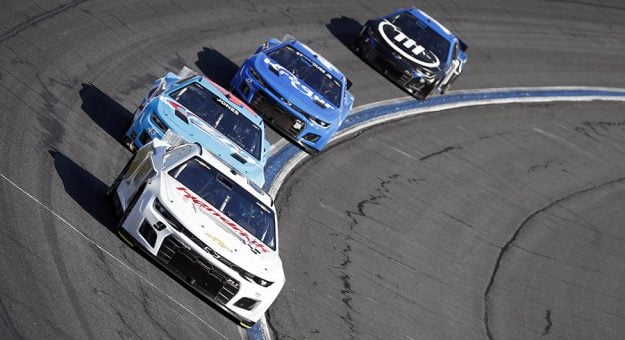CONCORD, N.C. — NASCAR is taking a step forward with its Next Gen race car, trying to stay ahead of a curve that is somewhat hard to define.
In the early 1980s when the sport went from the big and boxy Chevrolets, Fords and Dodges to smaller, more aerodynamic body styles (and added Buicks, Oldsmobiles and Pontiacs), it took a hot second for the fan base to commit. Change can be a very good thing, but only if the people buying it also buy in.
During that changeover, it took a little getting used to seeing smaller, more nimble machines on the track instead of the full-bore bigger cars, especially with a much smaller bumper on the front. They were taller, had sloped rear windows and a host of other changes.
Granted, a lot of the changes were forced on the sport due to manufacturer involvement. Win on Sunday, Sell on Monday was still a big thing and if you’re going to spend money on the sport, you might as well make money on it too, right?
I firmly believe the age-old adage about success on the track is at play here, since Chevrolet, Ford and Toyota all still sell cars. The effort to update the styling of the 2022 car was necessary to keep the cars on track looking somewhat like the cars on the lot.
Cost is another aspect of it. While there is short-term pain — several hundred Cup Series chassis essentially became nothing more than expensive paperweights as soon as the checkered flag waved at Phoenix Raceway in November — it was ameliorated by a goodly inventory of the new cars already built hanks to the time frame NASCAR attached to the project.
And, since Cup Series chassis are nearly the same as those used in the NASCAR Xfinity Series, there was a built-in market downstream for them.
The biggest changes — all the interior things like the digital dash and new engine specs — had been implemented prior to the move to the new car, so it was phased in and not just dropped on the teams, which helps a lot from a team standpoint.
Judging from the offseason testing conducted at Charlotte Motor Speedway, there are a few things the teams have to get their arms around before Daytona comes calling, in terms of setup, how to make adjustments that benefit the cars, and so on. Those will be solved in short order.
A new era is something that can be both enervating and scary as hell. What you’ve done for many years is now out the window; what you’ll do is in the future and not at all assured. Finding out what translates and what doesn’t for 2022 will be a major story, I’m sure.
Change is the one constant in our universe, and for the most part, NASCAR and other sanctioning bodies handle it well. NASCAR isn’t Formula 1, where each team builds its own cars to FIA specs and manufacturers guard their formulas ferociously. “Stock” cars are also anything but from a manufacturer standpoint, but they aren’t off the lot either.
There’s an entire industry built around the NASCAR way of life, and every one of the Cup Series teams is prepared to make the transition. There’s still the team aspect, in which the organizations that have been strong will likely remain so and the smaller teams have a chance to make gains on their betters. That’s going to be the story for 2022 …who among the Little Guys can topple the Big Guys by building a juggernaut?
Rumors of another manufacturer are constantly being floated, so far without success. If there ever was a time to join in, it might as well be now, since everyone is starting from the jump. I wonder if a season or so of development will entice a new marque to get in on the second floor, since the elevator has already started its ascent.
Regardless, the Next Gen era is about to kick off. It’s going to be exciting to see who got it right and who didn’t, and what that means come November.
